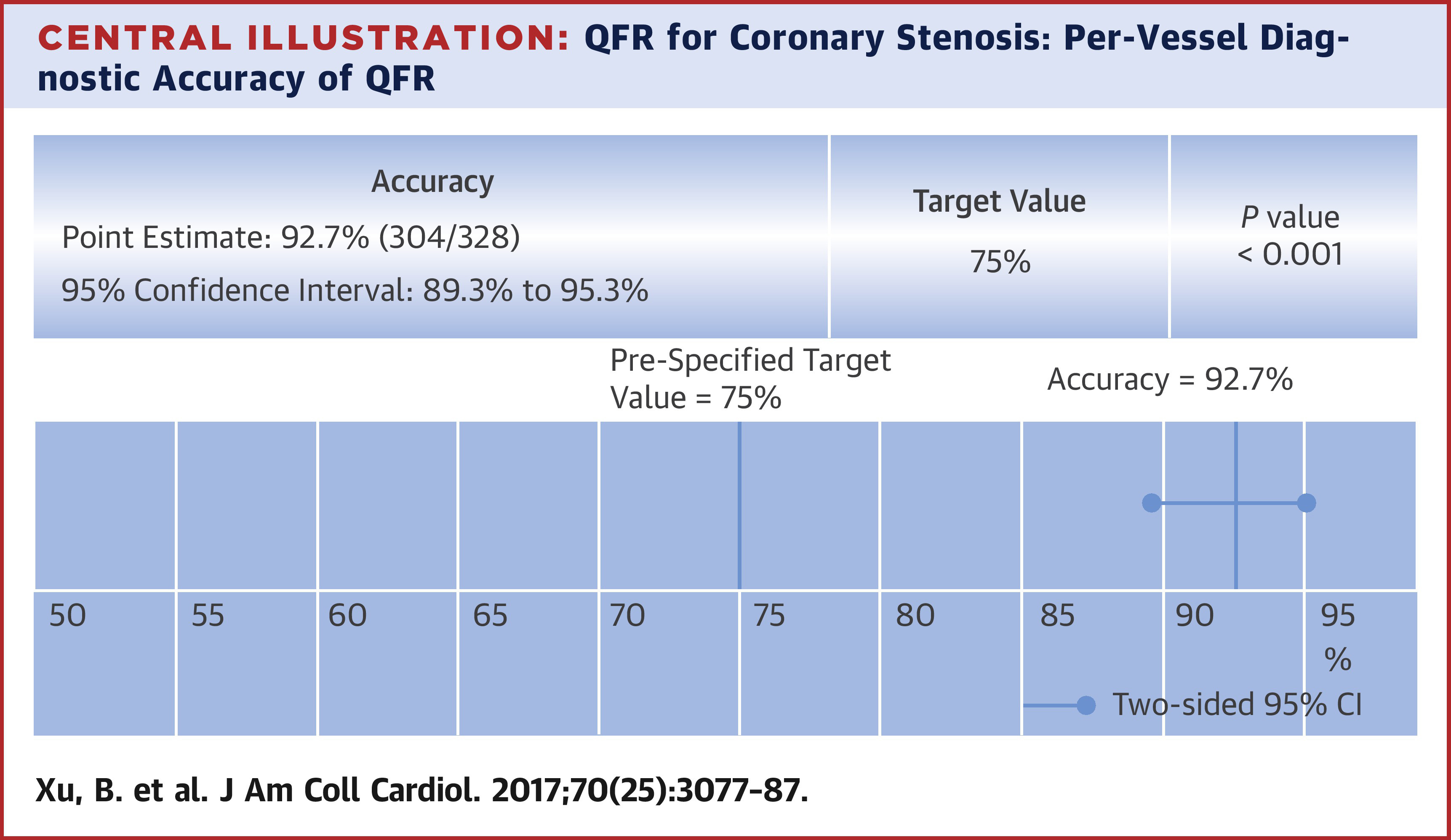
Scientific Library
Review Article2017 Dec 26;70(25):3077-3087.
JOURNAL:J Am Coll Cardiol. Article Link
Xu B, Tu S, Hu S et al. Keywords: fractional flow reserve; ischemia; quantitative coronary angiography; quantitative flow ratio; FAVOR II CHINA
BACKGROUND - Quantitative flow ratio (QFR) is a novel angiography-based method for deriving fractional flowreserve (FFR) without pressure wire or induction of hyperemia. The accuracy of QFR when assessed online in the catheterization laboratory has not been adequately examined to date.
OBJECTIVES - The goal of this study was to assess the diagnostic performance of QFR for the diagnosis of hemodynamically significant coronary stenosis defined by FFR ≤0.80.
METHODS - This prospective, multicenter trial enrolled patients who had at least 1 lesion with a diameter stenosis of 30% to 90% and a reference diameter ≥2 mm according to visual estimation. QFR, quantitativecoronary angiography (QCA), and wire-based FFR were assessed online in blinded fashion during coronaryangiography and re-analyzed offline at an independent core laboratory. The primary endpoint was that QFR would improve the diagnostic accuracy of coronary angiography such that the lower boundary of the 2-sided 95% confidence interval (CI) of this estimate exceeded 75%.
RESULTS - Between June and July 2017, a total of 308 patients were consecutively enrolled at 5 centers. Online QFR and FFR results were both obtained in 328 of 332 interrogated vessels. Patient- and vessel-level diagnostic accuracy of QFR was 92.4% (95% CI: 88.9% to 95.1%) and 92.7% (95% CI: 89.3% to 95.3%), respectively, both of which were significantly higher than the pre-specified target value (p < 0.001). Sensitivity and specificity in identifying hemodynamically significant stenosis were significantly higher for QFR than for QCA (sensitivity: 94.6% vs. 62.5%; difference: 32.0% [p < 0.001]; specificity: 91.7% vs. 58.1%; difference: 36.1% [p < 0.001]). Positive predictive value, negative predictive value, positive likelihood ratio, and negative likelihood ratio for QFR were 85.5%, 97.1%, 11.4, and 0.06. Offline analysis also revealed that vessel-level QFR had a high diagnostic accuracy of 93.3% (95% CI: 90.0% to 95.7%).
CONCLUSIONS - The study met its prespecified primary performance goal for the level of diagnostic accuracy of QFR in identifying hemodynamically significant coronary stenosis. (The FAVOR [Functional Diagnostic Accuracy of Quantitative Flow Ratio in Online Assessment of Coronary Stenosis] II China study]; NCT03191708).
Copyright © 2017 American College of Cardiology Foundation. Published by Elsevier Inc. All rights reserved.
